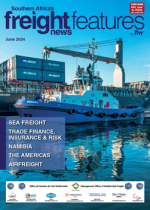Addressing the ongoing equipment issues at South African ports is crucial for the competitiveness of the sea freight sector. Neglect and mismanagement of funds have led to significant levels of capital expenditure. This poses a serious challenge in catching up with the necessary improvements. While borrowing remains an option, it is adding to the country’s escalating debt levels.Peter Besnard, CEO of the South African Association of Ship Operators and Agents (Saasoa), highlights the detrimental effects of ageing equipment and inadequate maintenance at South African ports. According to him, this issue severely hampers productivity and the timely turnaround of vessels. Moreover, there are ongoing challenges in terms of marine resources such as tugs, pilot boats, helicopters, and pilots, particularly at the ports of Durban and Richards Bay. Currently, only three out of the country's four helicopters are operational between Durban and Richards Bay, with one having been grounded for several months awaiting spares. The industry has consistently voiced concerns regarding tug availability at the ports. To address this issue, five used tugs are scheduled to arrive by the end of May. These additional tugs will help alleviate some of the pressure and will be put into commission at key ports including Durban, East London, and Port Elizabeth.Asked about pilot boats, Besnard said there was no certainty around replacement of these vessels which are also ageing and frequently non-operational. “There are serious repercussions to this. When both the helicopter and pilot boats are out of service, pilots must board vessels using alternative methods such as tugs or private service providers. However, this option is not viable at all ports. These challenges surrounding marine services contribute significantly to berthing delays.”The situation is further complicated when vessels are finally berthed, as there are ongoing and well-documented issues with the ship working equipment in all ports. The majority of gantry cranes currently in operation across the country have an average age of around 29 years. Even with assistance from Original Equipment Manufacturers in sourcing spares, obtaining them remains a challenge.Straddle carriers, essential for both ship working and landside operations, at all the ports are highly unreliable. In Durban, at the beginning of a shift, only about 50 are typically available to be divided between both operations at the container terminal, whereas an efficient operation the size of Pier 2 alone requires around 85. The remaining carriers are either waiting for spare parts, are too old to repair, or have been cannibalised to keep other carriers operational. Rubber-tyred gantries pose another issue, frequently breaking down due to their advanced age."If one considers all the challenges, it's understandable that productivity levels are far from optimal," said Besnard, emphasising the critical need for a solution at the ports. "As a country, we're operating in incredibly tough times. For exports, where foreign currency is earned, competition is fierce, and costs are of vital importance. On the import side, berthing delays of up to 16 days at the anchorage are proving to be a devastating financial blow for large businesses."

